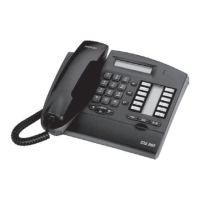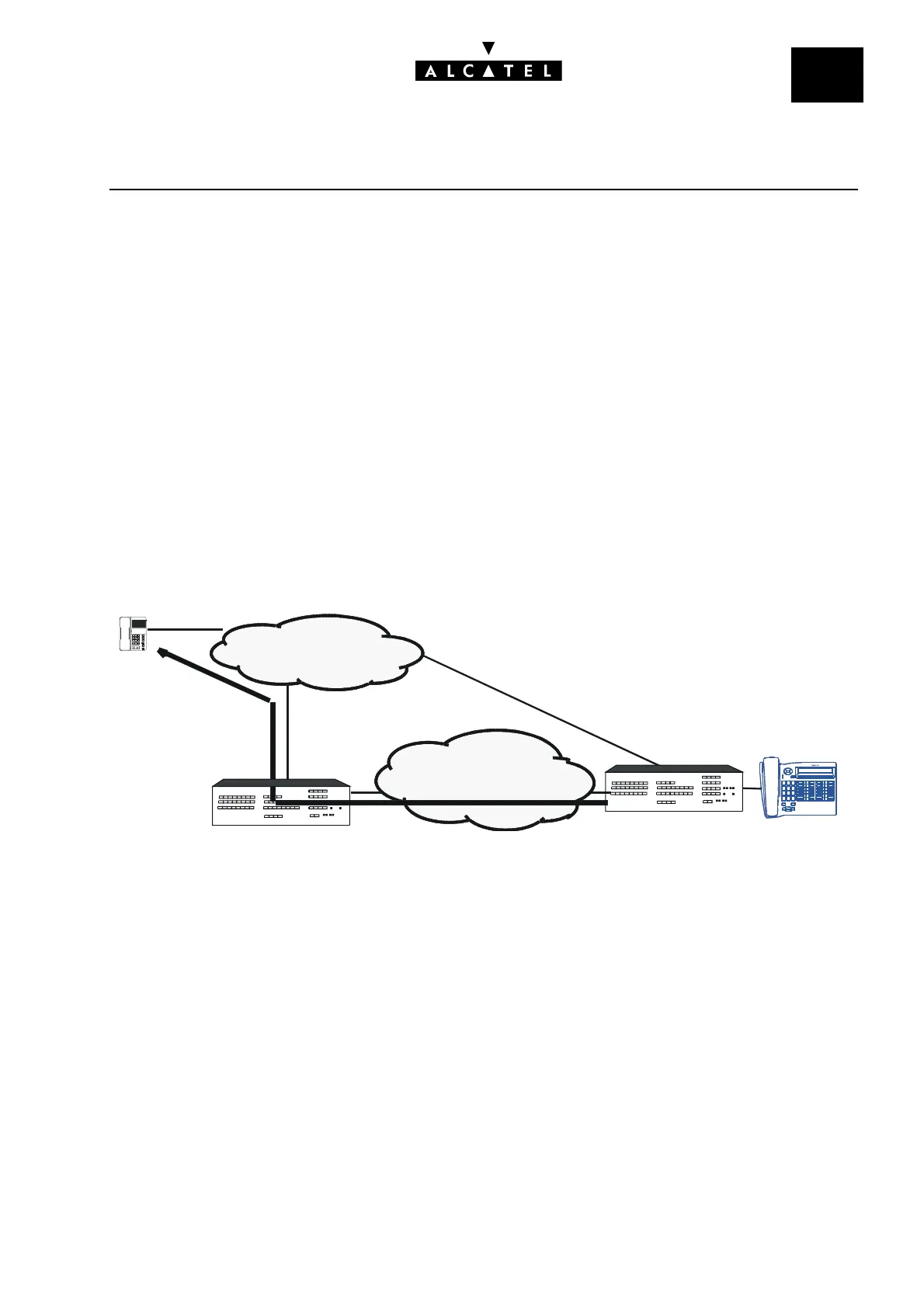File
1
THE NETWORK OFFERINGCALL SERVER : PRIVATE NETWORKS
Ed. 04 11/20Réf. 3EH 21000 BSAA
Break-out/Proximity break-out
- Break-out
A break-out makes it possible for the user of PABX A to call, via leased lines, a public network user by
using lines external to PABX B.
- Proximity break-out
A proximity break-out is a special use of the break-out: a call to the public network can be guided in
order to exit via the pubic accesses which are closest to the destination.
Example: a PABX A user (STRASBOURG) calls C (PARIS); the call is redirected on the private network
between PABXs A and B (PARIS) in such a way that it exits via B's public accesses.
This feature makes it possible to offer communications which are advantageous from a cost point of
view; there are 2 ways of calling a public user from A:
- direct call by the public network; in this case, the communication is charged in full.
- exit via A; thanks to the line leased between the 2 PABXs, only the part of the call from PABX B is
charged.
The following break-outs are possible:
- incoming call on leased line -> ISDN
- incoming call on leased line -> analog public network
The break-out can be implemented in 2 ways:
- automatically
- manually (transfer by operator for example)
The ARS tables can be programmed so that the automatic break-out mechanism is used (overflow or
forcing on the private network).
There is no monitoring (traffic sharing, barring) on break-out calls (PABX B); all these mechanisms must
be set up on the caller side (PABX A).
PUBLIC
NETWORK
BREAK-OUT
T2/T0
C
PABX A
PRIVATE NETWORK
(LEASED LINES)

